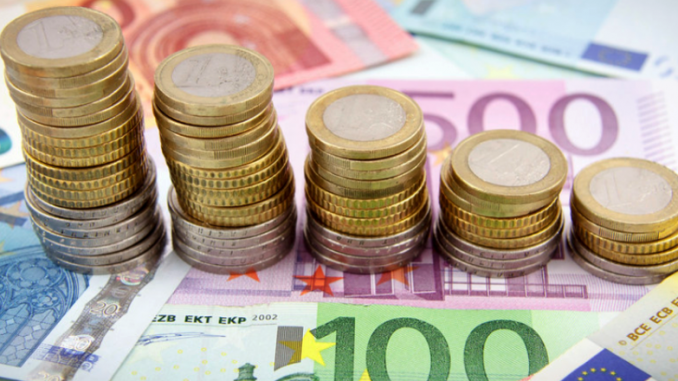
BRUSSELS, Belgium, September 9, 2021 (ENS) – The European Commission has adopted an independently evaluated Green Bond framework, taking a step towards the issuance of up to €250 billion green bonds, or 30 percent of NextGenerationEU’s total issuance.
NextGenerationEU is a temporary recovery instrument of some €800 billion to support Europe’s recovery from the coronavirus pandemic and help build a greener, more digital and more resilient Europe.
The NextGenerationEU Green Bond framework provides investors in these bonds with confidence that the funds mobilized will be allocated to green projects and that the Commission will report on its environmental impact.
Now that the framework has been adopted, the Commission will proceed with the first green bond issuance in the month of October, subject to market conditions.

Commissioner in Charge of Budget and Administration Johannes Hahn, said, “The EU’s intention to issue up to €250 billion in green bonds between now and end-2026 will make us the largest green bond issuer in the world. This is also an expression of our commitment to sustainability and places sustainable finance at the forefront of the EU’s recovery effort.”
The Commission has reviewed its plan for funding the recovery in 2021 and confirmed its intention to issue a total of around €80 billion of long-term bonds this year, to be topped up by tens of billions of euros of short-term EU-Bills.
The Commission will be offering the EU-Bills only via auctions, with its auctioning program due to start on September 15. Under its issuance calendar released today, the Commission in general will be holding one auction and one syndication per month for its bonds.
Commissioner Hahn said, “The confirmation of our original funding plan for 2021 is a sign of the excellent planning and preparatory work done so far. The launch of our auctioning platform is another piece of great news, which will further raise the attractiveness of EU borrowing and have a lasting impact on the EU capital markets.”
NextGeneration EU Green Bond Framework – a state-of-the-art exercise
Today’s NextGenerationEU green bond framework has been drafted in line with the green bond principles of the International Capital Market Association, ICMA, a market standard for green bonds.
A second party opinion provider, Vigeo Eiris, part of Moody’s ESG Solutions, considers that the framework is aligned with the ICMA’s Green Bond Principles, is coherent with the EU’s wider Environmental, Social and Governance, ESG, strategy and will “provide a robust contribution to sustainability.”
The framework has been aligned, to the extent feasible, with the European green bond standard tabled by the Commission in July 2021. An upcoming co-decision process in the European Parliament and Council will be followed by an implementation period prior to entry into force.
Green Bonds Must Be Used for Green Goals
The NextGenerationEU green bond proceeds will finance the share of climate-relevant expenditure in the Recovery and Resilience Facility, RRF. The Facility makes €672.5 billion in loans and grants available to support reforms and investments undertaken by the 27 EU Member States.
The goal is to mitigate the economic and social impact of the coronavirus pandemic and make European economies and societies more sustainable, resilient and better prepared for the challenges and opportunities of the green and digital transitions.
Every Member State has to dedicate at least 37 percent of their national Recovery and Resilience Plan to climate-relevant investments and reforms, with many Member States planning to do more than required.
Under the RRF rules, Member States will report to the European Commission the green expenditures that they make. The Commission will use that information to show investors how the green bonds’ proceeds have been used to finance the green transition.
The reporting will be organized around nine categories as identified in the NextGenerationEU Green Bond framework, with clean energy, energy efficiency and clean transportation taking the largest share.
In line with standard practice, the framework will report on both allocation and impact. For the allocation reporting, the Commission will use Member States’ data on spending on green projects. An independent external auditor will verify the allocation reporting.
Impact reporting will be a cross-Commission exercise, drawing on the wide expertise inside the institution and independent expert advice. On this basis, the Commission will disclose how the proceeds of the NextGenerationEU green bonds have been allocated to different investment categories and Member States.
To finance NextGenerationEU, the European Commission – on behalf of the EU – will raise from the capital markets up to around €800 billion between now and end-2026. €421.5 billion available mainly for grants (under RRF and other EU budget programmes); €385.2 billion for loans. This will translate into borrowing volumes of an average of roughly €150 billion per year.
Given the volumes, frequency and complexity of the borrowing operations ahead, the Commission will follow the best practices used by large and frequent issuers, and has implemented a diversified funding strategy.
In September 2020, the European Commission announced its intention to raise 30 percent of the NextGenerationEU funds through the issuance of green bonds and use the proceeds to finance green investments and reforms, in a sign of its commitment to sustainability.
Featured image: Small piles of euros symbolize the €800 billion that will support Europe’s recovery from the coronavirus pandemic and help build a greener, more digital and more resilient Europe. (Photo by verkeorg)



